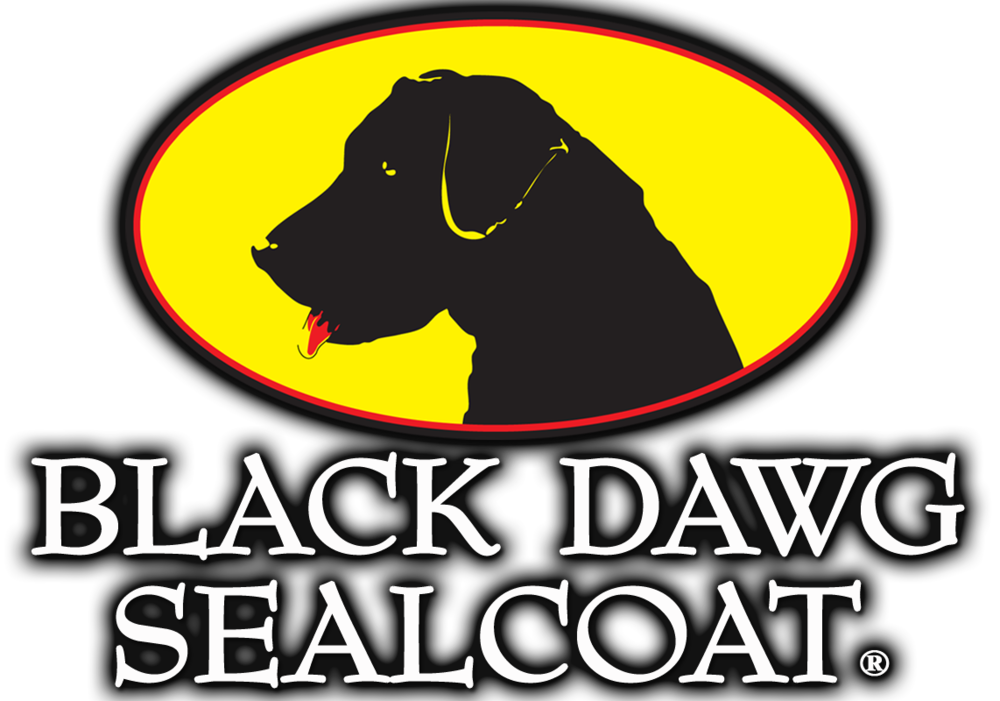The Small Print:
Driveway Sealcoating
It is important that you understand the services that are being offered and you have reasonable expectations consistent with industry standards, which we strive to exceed. Please read the details below and contact us if you have questions or concerns.
Asphalt sealants protect, preserve and beautify. They do not repair:
Damaged and failing asphalt will not be ‘fixed’ by sealant. More extensive repairs may be needed.
Asphalt sealants will not:
Raise low areas
Fill cracks
Completely smooth out a rough surface
Completely mask surface texture differences, like crackfiller, oil damage, and other imperfections
Thicker or stronger?
While there are inferior sealants that are watered down and far too thin, thicker is not fundamentally better. A great sealant and an awful one may have the same consistency. The chemical composition of high quality sealants make it protective, durable, and attractive; but not necessarily ‘thick’. In fact, budget sealants sold in stores may appear thicker because they have a gelatin added to keep the sealant in suspension for shelf life. This gelatin dissipates into nothing after application. Our sealant has clay, latex and sand added to the superior base product and has the consistency of hand lotion
Driveway Sealcoating Q&A
-
Sealant color may vary from dark black to slate gray and it is common to have a blueish tint. Many factors affect color including sealant curing cycles and seasonal or even daily weather conditions.
-
You will have a moderate amount of wear after the first winter.
There are many variables that affect the longevity of any sealcoating job: pre-existing condition, traffic, shade, overhead vegetation, water drainage, force of snow removal, chemical spills, and more.
Certain types of aggregate rocks in the asphalt can ‘pop’ or split in extreme cold or heat, leaving scattered speckles visible on the surface.
-
Flowing or puddled water
Areas with overhead trees or bushes will wear off early because of acids, sap and enzymes dripping onto the driveway. Also, the shade it creates results in prolonged moisture on the surface
Snow removal, especially plowing, will scratch the surface
Chemicals spills. Most commonly oil, gas and tire cleaner can damage or stain the sealant
High volume or repetitive vehicle traffic. Skid loaders or tractors forcefully turning on the surface
-
Remove snow with as little force as possible
Keep chemicals off of the surface. Chemicals in your garage will track onto the asphalt. Be aware of leaking fluids from cars. Spray on tire cleaner in the road
Cut back trees and bushes that cause significant shade if possible
Be sure your roof gutters are properly draining water away from the driveway
Try to vary where you drive into your driveway and garage
-
Sealcoating is a maintenance act and wear off technically starts on day 1. While you may need to mow your lawn weekly, you only need to sealcoat every 2-3 years to effectively protect your driveway. If you want that perfect look, it is OK to seal more often but this is not necessary for protection and preservation purposes.
The Small Print:
Hot rubber crackfiller
What cracks will be filled?
Hot rubber crackfiller is heated to a semiliquid and poured into full depth ‘structural’ cracks that are wide enough to effectively accept it. Thin or superficial cracks will not be filled and may still be evident after job completion. Spider-web cracked areas are often not completely filled. These areas may be too far gone to gain any structural improvement, and therefore the cost would not be justified.
Crackfiller will show
Hot rubber crackfiller will always show through the final coat of sealant because the scraped out rubber surface texture is smooth, in contrast to the porous adjacent asphalt. The driveway may literally be the same color after sealcoating, but the strips of crackfiller will still stand out because the surface texture is different and reflects light contrastively.
Crackfiller can be soft
The same properties that allow it to remain pliable and flexible during asphalt expansion and contraction, can make the crackfiller relatively soft in warm weather. The hotter the temperatures, the softer it may get. Inferior products may be less soft in summer heat, but become brittle in cold temperatures. The rubber will firm up as time goes on and when you get into cooler temps. Tire marks are common and are often unavoidable. Contact us in-season if a section completely pulls out and it can be touched up.
How long will the job last?
The term ‘last’ means different things to different people. Sealcoating is a maintenance act and wear off technically starts on day 1. You will have some wear in the first year, especially through the course of winter. Many variables affect the longevity of any sealcoating job; primarily pre-existing condition, level of use, sun exposure/tree shade, chemical spills, water drainage, and weather related factors (like snow falls and snow removal). Two driveways done on the same day, with the same sealant, may have drastically different life times. You are protected against sealant ‘failure’, which is rare. Failure is often obvious as extensive deterioration is evident within months and there is no apparent cause. There is no extended warranty on hot rubber crackfiller because the longevity is mostly related to how wide the crack is and how much your ground shifts during freeze/thaw cycles. Please note that cracks are still protected by crackfiller even when it has split.
